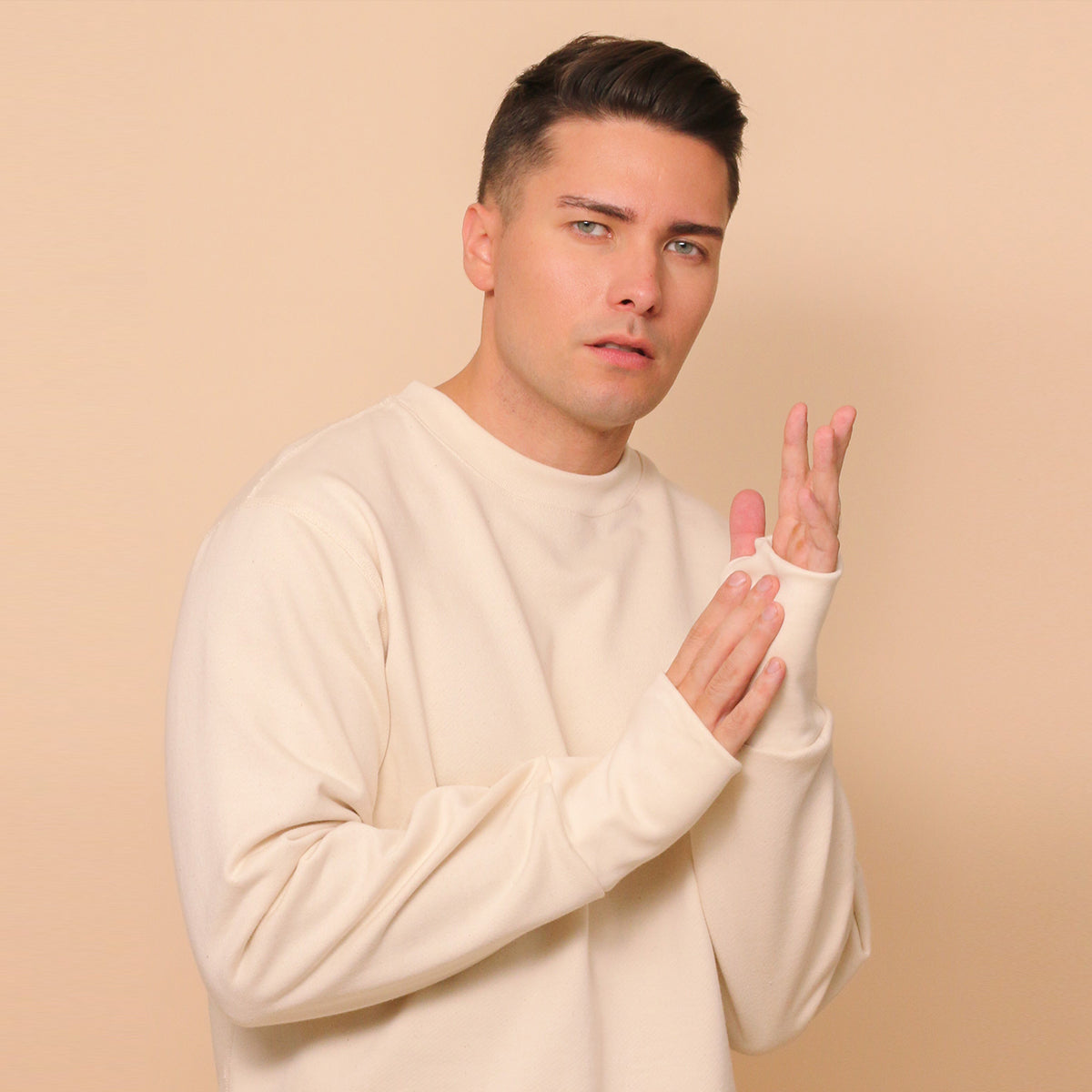I thought we’d take a look at the dyeing process because so many people ask if we use “natural” dyes. The answer is no, we don’t (although we’re not entirely objecting to natural dyes), and I hope the next two blogs will explain our position! Let’s first take a look at what makes the dyes (and how they are applied) an area of concern.
Dyeing cloth is one of our oldest industries; people used natural products found around them to change the color of the fibers used to make their cloth – things like leaves, berries, or roots. The first synthetic dye was created in 1856. Today the use of natural dyes on a commercial scale has almost disappeared (except for a resurgence in the craft market) in favor of the newer synthetic dyes. The production of synthetic chemical dyestuffs has become big business, but unfortunately the production and use of these synthetic dyes is one of the world’s most polluting industries. Conventional synthetic dyes present health risks to those working with them and to those who wear them, as well as damaging the environment in a number of ways. Why?
Dyes are compounds that can be dissolved in solvents, usually water. The process of dyeing cloth uses a great quantity of water – according to the United States EPA, it takes an average of 5 – 35 gallons of water for every pound of finished fabric. That translates into 125 – 875 gallons of water to dye 25 yards of fabric – enough to cover one sofa![1]
The dyes in solution are absorbed by the fibers. The process of transferring the dye from the water to the fiber is called exhaustion or “fixation rate”, with 100% exhaustion meaning there is no dye left in the dyebath solution. Most conventional dyes have an exhaustion rate of 80%, meaning the dyestuff which is not affixed to the fiber is flushed into our rivers with the spent process water. Each year the global textile industry discharges 40,000 – 50,000 tons of dye into our rivers, and more than 200,000 tons of salt.[2]
One of the most pressing issues today is the lack of fresh drinking water, and as one of the most polluting industries, textiles – and especially the dyeing of textiles – is responsible for many instances of pollution making fresh water undrinkable. In the worst cases, communities have to use polluted water to drink, wash clothes, bathe and irrigate crops and the toxins they’re exposed to can have catastrophic effects. Even in those instances where water treatment is in place, toxic sludge is a byproduct of the process. Often sludge is sent to the landfill, but the toxicity of the sludge remains – containing, among others, heavy metals, gypsum, malachite green (identified by the U.S. Food and Drug Administration as a priority chemical for carcinogenicity testing).
pink-sewage-300_tcm18-156872
The 40,000 to 50,000 tons of synthetic dyestuffs expelled into our rivers are complex chemical formulations containing some things that are very toxic to us, such as heavy metals (like lead, mercury, chromium, zinc, cobalt and copper), benzene and formaldehyde. Many certifications, such as the new Global Organic Textile Standard and Oeko-Tex, restricts the kinds of chemicals allowed in certified products. For example, GOTS restricts amine releasing AZO dyes and disperse dyes (must be <30 mg/kg); chromium, cobalt, copper, nickel, mercury, lead, antimony and arsenic are all restricted (rather than prohibited as many people believe). So the dye formulation means a lot when you’re evaluating the eco credentials of a fabric – but almost never will you be able to find out what dye was used in any particular fabric. Copyright: Jucheng Hu
In addition to the formulation, there are requirements that dyestuffs must meet regarding oral toxicity, aquatic toxicity, biodegradability, eliminability and bi-accumulation in fatty tissues. The GOTS details are on their website: www.global-standard.org. Some dyestuff producers advertise that they have a dye group that meets these standards, such as Huntsman and Clariant. So the formulation of dyes used makes a big difference – look for dyestuffs that have been certified by a third party, such as GOTS.
Remember that if the average exhaustion rate is 80% for most dyes (i.e., that 20% of the dyestuff is expelled with the wastewater) then that means that 80% of the dyestuff remains in the fabric! In other words, those toxic chemicals remain in the fabrics you bring into your homes. What do I mean by “toxic” – if you can stand it, I’ll give a short synopsis of the effects some of these chemicals found in many dyestuffs have on us:
* Mercury: Easily absorbed thru the skin or inhalation of dust
which contains residues; effects the immune system, alters genetic and
enzyme systems, damages the nervous system. Particularly damaging to
developing embryos, which are 5 to 10 times more sensitive than adults.
* Lead: Easily absorbed thru the skin or inhalation of dust which
contains residues. Impacts nervous system. Even low levels of lead can
reduce IQ, stunt growth and cause behavior problems.
* Chromium: Necessary for insulin activity and an essential trace
metal; at toxic levels it causes squamous cell carcinoma of the lung.
* Copper: Fatigue, insomnia, osteoporosis, heart disease, cancer,
migraine headaches, seizures. Mental disorders include depression,
anxiety, mood swings, phobias, panic attacks and attention deficit
disorders.
* Cadmium: Extremely toxic to humans because of its inhibition of
various enzyme systems; primary target organ is the kidney; but also
causes lung cancer ; also causes testicular damage and male sterility.
Plants readily absorb cadmium from the soil so it easily enters food
chain. Chronic exposure is associated with renal disease.
* Sodium chloride (salt): not toxic in small doses (thankfully for
me and my salt addiction), but the industry uses this in such high
volumes it becomes an environmental hazard; an organochlorine (the class
of organochlorines are very stable (i.e. does not break down into other
compounds) and they bioaccumulate; 177 different organochlorines have
been found in the average population in Canada and the US. Each person
has a unique level at which this build-up becomes critical and triggers
a wide range of health problems.) Well known effects of chronic
organochlorine contamination include hormonal disruption, infertility
and lowered sperm counts, immune system suppression, learning
disabilities, behavioral changes, and damage to the skin, liver and
kidneys. Newborns, infants, children, childbearing women and the elderly
are even more vulnerable to these health impacts.
* Toluene: affects the central nervous system; symptoms range from
slight drowsiness, fatigue and headaches, to irritation of the
respiratory tract, mental confusion and incoordination; higher
concentrations can result in unconsciousness and death. Prolonged
contact can cause dermatitis. Teratogenic, embryotoxic.
* Benzene: Highly carcinogenic, linked to all types of leukemia but
believed to cause the rarer forms (acute myelogenous leukemis (AML) and
acute lymphocytic leukemia (ALL); effects the bone marrow and decrease
of red blood cells, leading to anemia, excessive bleeding and/or immune
system disfunction. Low levels cause rapid heart rate, dizziness,
headaches, tremors, confusion. Easily absorbed by skin
Better Thinking Ltd., a UK based organization, took a look at the dyes used in the industry and what they do to us and our environment. They published their findings in a paper called “Dyeing for a Change” which explains the various synthetic dyes available and how they’re used. (Click here to read about it.)
There are several classes of dyes:
1. Direct dyes: given this name because they color the fibers
“directly” and eliminates the need for a mordant (the chemical fixing
agent lots of dyes need). Azo dyes are a type of direct dye made from a
nitrogen compound; azo dyes are known to give off a range of
carcinogenic particles and have been banned in many places, including
the EU. Effluent contains 5 – 20% of original dyestuff, plus salt and
dye fixing agents.
2. Vat dyes: these dyes need a powerful reducing agent, such as
alkali, to make them soluble. Expensive and complicated to use,
effluent contains 5 – 20% of residual dyestuffs, plus reducing agents,
oxidizing agents, detergents and salts.
3. Sulphur dyes: 90% of all sulphur dyes contain sodium sulphide,
which endangers life and alters DNA, corrodes sewage systems, damages
treatment works and leads to high pH and unpleasant odors. Effluent
contains 30 – 40% of the dyestuff plus alkalis and salt.
4. Reactive dyes: these dyes bond directly with the fibers, rather
than merely remaining as an independent chemical entity within the
fiber. Applied with relatively cool water (saving energy) and
Of all the classes of synthetic dyes, a subset of “reactive” dyes (called “low impact fiber reactive”) seems to be the best environmental choice. As “Dyeing for a Change” explains:
Low-impact reactive dyes are usually defined as “low impact” because of the supposed lower fixation rate – however, these dyes have a fixation rate of at least 70%, which still leaves much room for improvement. What does make them “low impact” and classified by the EU as eco-friendly: they have been formulated to contain no heavy metals or other known toxic substances, and do not need mordants. The high cost of this dye becomes an environmental advantage, as it is cheaper to reclaim dye from the effluent rather than discharge it all and start from scratch. The water can also be recycled. The dye cycle is shorter than it is for other dye processes, meaning less water, salt and chemicals are needed. The entire process normally occurs at a pH of around 7.0, meaning no acids or alkalis need to be added to the water.
However, there are still disadvantages: like other environmentally damaging dyes, these dyes are made from synthetic petrochemicals. The process requires very high concentrations of salt (20%-80% of the weight of the goods dyed), alkali and water. Even if the unfixed dye is reclaimed, the effluent from this process can still contain high concentrations of salts, surfactants and defoamers, and is strongly alkaline. It’s also quite expensive, whereas conventional dye is cheap. This process’ effluent normally contains salt, alkali, detergent and between 20% to 50% of dye used. As reactive dyes currently make up 50% of world dye consumption, more knowledge on how to improve upon this method is needed.
Fortunately, research is being undertaken in this area, and a number of companies have produced products that improve on its impacts. It’s been found that, by pre-treating cotton with 120g of phosphate buffer per kg of fabric, no salt or alkali is needed in the dyeing process as the process can occur at a neutral pH. It also means the amount of water required can be halved and the whole dyeing process can be significantly reduced, presenting additional benefits in the form of cost savings. Compared to the other chemicals used to dye fabric the conventional way, this is a relatively low concentration, and its high exhaustion value means the effluent would only contain it in small proportions, making it a greener alternative. And British scientists have developed a way to use algae (called diatoms) to color the fabric – eliminating dyes entirely![3]
So you see why water treatment is critical – even if a dyestuff has a rather benign chemical formulation, the associated salts, defoamers and fixing agents must be dealt with. We chose low impact fiber reactive GOTS approved dyestuffs for our fabrics – and we made sure that all wastewater is treated adequately before release. But that’s not good enough – partly because there is still the question of the sludge created during the process and partly because we need to make sure that ALL process inputs have a benign chemical profile.




1 comment
Chris
We currently don’t use dyes in any of our products, however, in the near future we are considering the possibilities of using vegetable color (organic) dyes.
Leave a comment
All comments are moderated before being published.
This site is protected by reCAPTCHA and the Google Privacy Policy and Terms of Service apply.